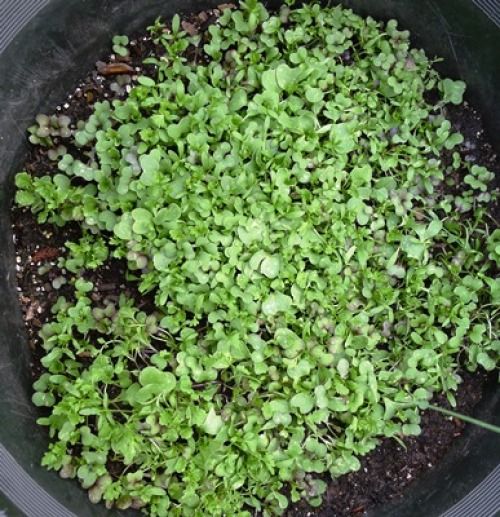
Long before the radishes, kale and lettuce I planted in April started taking off, I was already harvesting the Micro Greens I planted at the same time.
The weather in early spring was unsettled, which is a nice way of saying that it snowed once a week for a month. I had planted the seeds for some cool season crops on a warm day, but then the snow just wouldn’t stop.
There would be a few warm days in between snowfalls that would encourage the seeds to start germinating. Then the snow would fall and cover the patio container garden in a thick blanket of the white stuff.
I’d take a peek into the containers on those warm days and was surprised to see the Micro Greens were the first sprouts in the garden. Between the time the snow finally stopped and the rain started, I was able to clip nice bunches of Micro Greens to bring into the kitchen.
The packet of seeds I sprinkled in the container would’ve been ready to start enjoying in less than a month, if there hadn’t been any interruption to their growing cycle.
“Micro Greens” describes varieties of greens that are harvested when they’re only 1 or 2 inches tall. Unlike cut-and-come-again lettuce, Micro Greens are good for only one harvest.
This batch of spicy Micro Greens came from Botanical Interests Seed Company and included Sawtooth Mustard, Peppergrass Cress, Cabbage Red Acre, Mustard Red Giant, and Radish China Rose. Of course, there are many other individual varieties and combinations to plant.
Because these greens grow so quickly on their own, they only need sun and water; no fertilizer required. I plan on planting crops in succession through the season by moving the container to a semi-shaded spot in summer.
To plant, sprinkle a thin layer of seeds over the top layer of soil in a large container, gently tap them into place and cover with another thin layer of soil. Water in (gently so you don’t displace seeds) and made sure to keep them moist.
When the plants have at least two true leaves, use scissors to clip the stems at the soil line. Rinse gently in a colander and dry between paper towels.
These fresh greens make an interesting addition to salads and a nice alternative to lettuce, herbs or sprouts in sandwiches.




















Comments
Log in or create an account to post a comment.
Sign up Log in